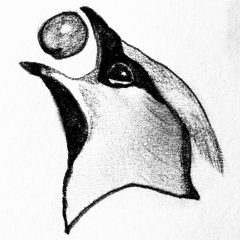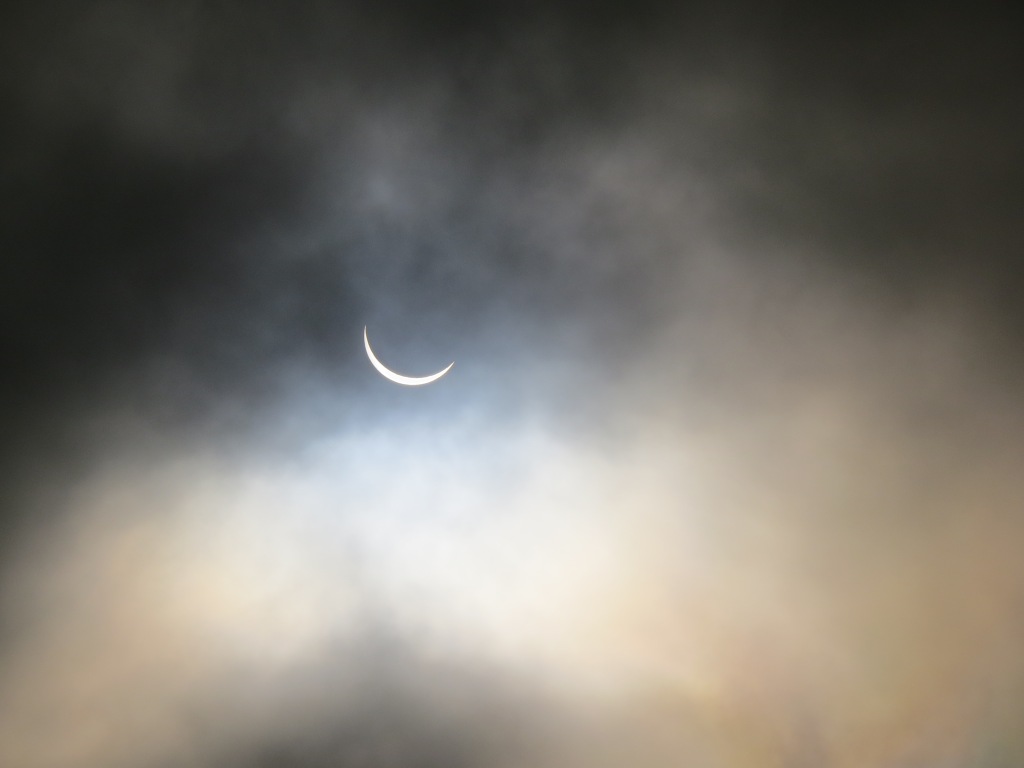As a country child of the Sixties it was necessary to ‘make your own entertainment’ when not at school or in church. This consisted of outdoor pursuits involving dogs, a variety of other small animals, cows, horses and the slaughter of wildlife. We supplemented this with reading on inclement days. Books had a prominence then undimmed by electronic distractions.
To me the best books were those precursors of the scientific tomes of adulthood produced by Ladybird Books. They produced guides to many things but I particularly liked the ‘What To Look For’ series illustrated by the peerless C F Tunnicliffe.

The Ladybird book of BRITISH BIRDS and their nests was bought for me in Gatehouse of Fleet when I was four. We were staying at Cally Palace. It is the first family holiday I can vaguely remember and we have cine footage of it. The staff kept stale bread behind reception so that we could feed the ducks on Cally Lake. My father knew Mrs Murray-Usher and we received one of her famous Christmas cards annually.

The Observer books were exciting because they looked more like proper textbooks or field guides that a grownup might use. Birds interested me and I had both The Observer’s Guide to Birds and The Observer’s Guide to Birds’ Eggs. Later, at Christmas 1964, my father’s cousin Robert Osborne, a birdwatcher, gave us The Oxford Book of Birds, illustrated by his friend Donald Watson. The dust jacket is now tattered and fragmented – from use, not lack of respect.

For years Spotted Flycatchers nested in the Virginia creeper above the front door at the farm. My father was very fond of them and bought a watercolour by Donald Watson of an adult perched on honeysuckle holding a Small Tortoiseshell butterfly. Two juveniles are in the background waiting to be fed.
Inevitably I started a birds’ egg collection. That’s what boys did in the Sixties. It was exciting looking for the nests and I once witnessed a wren’s egg hatching through the side entrance of the globe-shaped nest. I only took one egg from any clutch – which the parent would soon replace with a new one. I have heard that the collection of fresh gull eggs for eating involved taking one egg and marking the rest so that you could return the next day and identify which one was new-laid and therefore didn’t contain a gull embryo.
My father had our local joiner make me a glass-topped display case to show off my collection. The eggs were bedded on cotton wool within plywood partitions. The eggs first had to be ‘blown’ by putting a small hole in each end and forcing out the contents using wind power. When my Uncle heard I had started a collection he asked if I had a hen’s egg in it. I asked him why I would need such a thing and he said firmly that no collection was complete without a hen’s egg. The next day he handed me one and said, “There you are. Blow that one.” The family watched as I tried my utmost to expel the contents without success. The egg had been hard-boiled. Afterwards I noticed tiny petechial haemorrhages in the whites of my eyes as evidence of the effort I’d made. I often wonder if the surface of my brain looked the same.
My childhood coincided with the peak use of primitive pesticides in the UK and I am sure this contributed to the striking lack of raptors around our farm. DDT was a notorious cause of fragile eggs in raptors as the chemicals become concentrated in their bodies from eating contaminated prey. It was not unusual to discover dying wood pigeons around the place, presumably having ingested treated grain.
In the byre, and even in our kitchen on the farm, we had electric fly killer devices mounted on the walls. These heated up and vaporised solid insecticide which fumed off into the air in places where we produced milk, prepared our food – and breathed. Perhaps my mother was concerned about it because as I recall the ones in the house were usually switched off.
Later, as a teenager, my interaction with birds became much more destructive. I may post something later on guns, but suffice it to say that I had sufficient expertise with a .22 Webley Falcon air rifle to cause the demise of many, many sparrows and starlings. I kept my old school blazer until it became a victim of moths. In the pocket was a handful of lead pellets, which we referred to as ‘slugs’.
For my 21st birthday Robert Osborne – my dad’s cousin whom I mentioned above – gave me a pair of Zeiss East* 7×30 binoculars with a leather strap and case and a copy of Collins Pocket Guide to British Birds, the precursor to the legendary Petersen, Mountford and Hollom. This was my first proper field guide but both these gifts were stored away without being used. Urban pursuits were much more interesting.
Birds didn’t feature in my life after that for over a decade until I began my radiology training at the Royal Infirmary.There I met my friend Rob Jones who was in the training year above me. Rob had a very wide range of interests: athletics, chess, military history, castles, food, wine, art – and birds. Having ascertained that I once possessed a collection of eggs he asked me if I wanted to go out birdwatching with him. By this stage I had progressed so far down the lounge lizard route that I no longer had any outdoor clothing – only impractical smart car-to-bar stuff. However I still had my as-new, unused, pair of East German binoculars and a field guide. I said I would be interested in going out to look for birds and when I asked where we would be going he said, unexpectedly, “Musselburgh”. This did not sound promising but I bought some walking shoes and waterproofs and one Saturday morning we set off.

What was once a big sandy beach north of Musselburgh racecourse was enclosed by a massive concrete rampart so that it could be back-filled with water-borne ash from the coal-fired power station at Cockenzie. The amount of unburnt coal these ash deposits represent is incomprehensible. The ‘settlement lagoons’ within the wall incidentally created a sea-viewing platform hundreds of yards long extending from the mouth of the Esk to beyond ‘the scrapes’ and their concrete, roofless hides. Scrapes are shallow pools intended to attract wading birds. The hides have to be such spartan affairs because the locals have predilection for setting wooden hides on fire. Adding topsoil to the ash pans created a vast weedy, grassy plain frequented by breeding skylarks, stonechats and winter migrants. It became one of the best sites for rarities in the UK.
I noticed that Rob’s binoculars did not look as if they had been made in East Germany. I also noted he had a telescope.
At first I didn’t grasp the necessity of constant vigilance and treated the day like a nice walk and a chat. After I missed what would have been my first ever peregrine falcon flying low overhead I decided I really ought to concentrate. At the end of the day I’d seen birds like mergansers, goldeneyes and divers from the pages of my childhood books I thought contained only fantasy creatures never to be seen. I also discovered that making an identification was not at all easy. The birds might be too far away. The light might be bad. They might be bobbing up and down on a choppy sea or they might be in atypical plumage. Also, I had no idea what noises they might make. Most troublesome of all, I had no concept of what birds were common or where they might be expected to turn up. I needed an experienced teacher. I was hooked.
So what does one call this bird hobby then? In the UK it is generally known as ‘birdwatching’ – a passive-sounding title. In North America it is called ‘birding’, yet another of the US noun-to-verb evolution. I bird, you bird, he or she birds, we bird, you bird, they bird. Birding does sound a bit more active than birdwatching. Whatever it is, it is certainly not ‘bird-spotting’. I cannot pinpoint why this is such annoying term. Maybe it’s the similarity to train-spotting with all the humiliating geeky baggage that implies. What is clear is that it is still very much a male pastime. The inside of the Collins guides had the following:

Many years into my birding life my attention returned to my egg collection. There were my prized possessions; the eggs of wrens, lapwings, song thrushes, blackbirds, starlings, curlews, chaffinches, yellowhammers… and by now I was acutely aware that it was illegal to have them. Lots of bad publicity surrounded egg-collectors, people I had come to regard as deranged or evil – or both. I wondered if my eggs might be of interest to an official collection. I phoned up my trade union, the RSPB, for advice. The gentleman at the other end did not hesitate. “Destroy them.” he said. “You cannot hold a collection of wild bird eggs.”
So I did. I smashed them up and put them in the bin. Even though no one would ever have known I had them. I felt I had to cleanse myself of them but I can’t avoid some pangs of regret.
The handsome bespoke display case survived. We filled it up with other little treasures and nicknacks: silver napkin rings, art nouveau spoons, silver egg cups, glass animals – and a painted goose egg. Mike Gill, head of the Art Department at Watson’s, kept poultry. He painted the blown goose egg with images of “Hark the Herald Angels Sing” and gave it to us one Christmas.


*At the end of World War II the division of Germany also split the factories of the German optical firm of Carl Zeiss. Its headquarters were in Jena, which ended up in the DDR. The West German part of the company continued to innovate and improve their product making the highest quality binoculars. Meanwhile, in communist East Germany the Soviet Union dismantled the factory and removed it to the USSR as part of war reparations. There they continued to manufacture optics to the pre-war designs. The binoculars were still of good quality and much cheaper than the West German version, however they fell further and further behind in technical refinement. Buying Zeiss East was a more affordable way to get decent optics – but with the unification of Germany in 1990 manufacturing ceased in the former Eastern Bloc and the factories closed.























